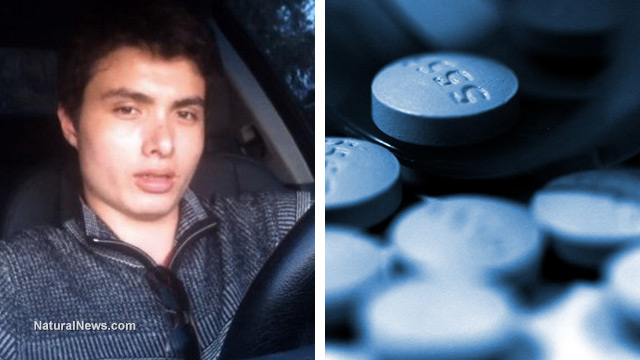Legendary priest breaks lengthy silence
Fr. Jozo Zovko is back at writing commentaries on the Virgin Mary’s monthly message. Medjugorje’s charismatic parish priest by the time the apparitions began has been away from public spotlight for more than five years, asked to stay silent until the Vatican Commission had finished.

Among the few recent photos to emerge of Fr. Jozo Zovko, this one stems from the Autumn of 2011
Publically silent since early 2009, Fr. Jozo Zovko has now resumed his meditations or commentaries on the Virgin Mary’s monthly message given on every 25th day of the month to Medjugorje visionary Marija Pavlovic-Lunetti.
Now 73 years old Fr. Jozo, the parish priest in Medjugorje when the apparitions began and quickly imprisoned by the communist regime for refusing to denounce the Virgin Mary’s appearances, has only met with very few pilgrims since February 2009. His most recent message commentary dated back even longer when he wrote the first of now three in April this year.

Fr. Jozo with visionary Mirjana Dragicevic around 1983 when the priest had just been released from 18 months of prison for refusing to denounce the apparitions in Medjugorje
Fr. Jozo’s comeback as a writer coincided almost precisely with the Vatican Commission on Medjugorje finishing its work, as this took place in January this year. His Franciscan superiors had asked him not to speak about Medjugorje in public until the Commission had finished, an order Fr. Jozo obeyed without viewing it as a punishment.
Fr. Jozo was among the key figures the Commission called and questioned. According to Medjugorje Today’s informations, the Commission members were particularly impressed by Fr. Jozo, a well-known charismatic whose talks and writings have affected very many people throughout the years.

Recent photo of Fr. Jozo Zovko
In his most recent message commentary, Fr. Jozo calls his readers to true Christian apostleship, noting that only Christians have the tools and answers needed to solve contemporary problems:
“Our time of trials and troubles – like floods, earthquakes and wars – has shown who is a Christian, and who is a man-humanist. This is the time of those who have the heart and the time for prayer, the time for good deeds. Such Christians have the eyes to see the wounds and pains, the sufferings and needs of their neighbors. And today only love – Christian, Jesus’ love – saves and that is why we must stop interpreting and making new theories why and from where problems and troubles come”. Fr. Jozo Zovko states.
“So many live unwisely, and many have lost the joy of life and are fighting against the forces of evil and darkness losing the last hope. Everything is contrary to their wishes and dreams and they simply are losing the will to live. In that night of ignorance and trial man needs God. He is the light. He is a new day. He is our safety.”

Taken in July 1981, shortly before he was arrested, this is one of the earliest known photos of Fr. Jozo with the Medjugorje visionaries. Left to right: Marija Pavlovic, Mirjana Dragicevic, Vicka Ivankovic, Jakov Colo, and Ivanka Ivankovic. Only Ivan Dragicevic is missing in this photo from the first summer of the apparitions
“Our generation seeks and needs its apostles. They are not the people who pride themselves on their diplomas and knowledge but the people who have changed their lives – converts. Today only true converts, or rather saints, have the opportunity to help neighbors. Today’s Samaritans watch how Levites and priests passing by the neighbors knowing they have nothing to give them because they have no time, because their time that should be devoted to the neighbor is lost” Fr. Jozo further notes.
“Such lost time makes man nervous and unhappy. Our wrong education makes the love for the neighbor difficult for us, and our conflicts make wounds on the body of the Church family. We are waiting for the good Samaritan, the Samaritan who wholeheartedly meets and helps the needy. He always has something to give and offer, and never walks without the indispensable oil and wine. He knows where the medical clinic is and to whom the patient should be taken to have his health restored.”

Fr. Jozo met Pope John Paul II in 1992. Ten years later, he was positively surprised upon receiving an apostolic blessing from the Pope in his mail. The text reads: “I grant from the heart a particular blessing to Father Jozo Zovko, o.f.m. and I invoke a new outpouring of graces and heavenly favors, and the continuous protection of the Blessed Virgin Mary”.
Since December 2011, Fr. Jozo Zovko has served in a Franciscan monastery in Zagreb, Croatia. Since he left Siroki Brijeg near Medjugorje in early 2009, the last place where he was available to pilgrims on a larger scale, he has also been in charge of rebuilding a Franciscan monastery on the Croatian island of Badija.
Published on the website of his organization “International God-Parenthood for the Herceg-Bosnian child”, dedicated to helping orphans of the 1992-95 war in Bosnia and Hercegovina, Fr. Jozo’s message commentaries from April and May this year are also available in English.
Spirit Daily is circulating this article



 Tuesday, June 03, 2014by
Tuesday, June 03, 2014by  About the author:Mike Adams (aka the "
About the author:Mike Adams (aka the "
